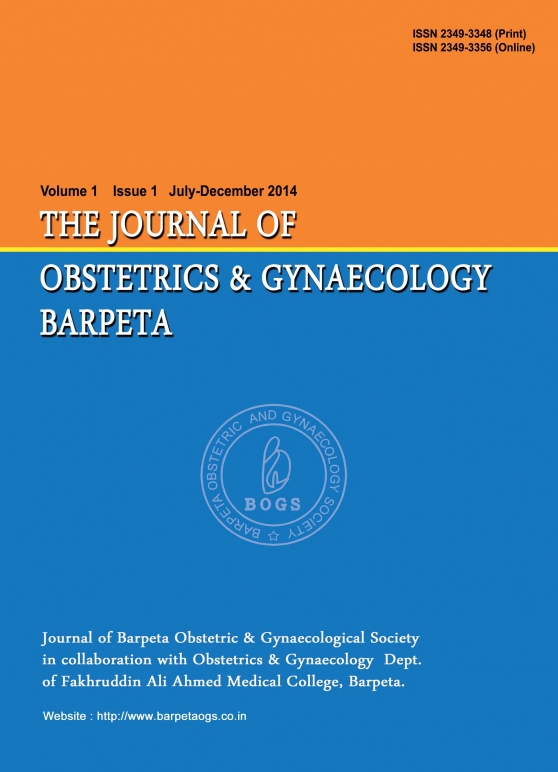
The New Indian Journal of OBGYN. Epub Ahead of Print
Seroprevalence of Chlamydia Trachomatis infection in Kashmiri women of reproductive age with mucopurulent cervicitis, infertility and ectopic pregnancy - a hospital based study
Qurat ul Hassan, Asma Hassan Mufti, Samiya Mufti
ABSTRACT
Objectives: To find the seroprevalence of the Chlamydia Trachomatis (CT) infection in women who suffer from infertility, mucopurulent cervicitis and ectopic pregnancy and to investigate the possible role of the Chlamydial serology as a screening test by detection of the anti-Chlamydia IgG antibodies using ELISA. Methods: Over period of two years, total of 160 women who attended the gynecology OPD of Government Lalla Ded hospital, Srinagar, were screened for presence of Chlamydia Trachomatis IgG antibodies. Patients were categorized based on clinical diagnosis into 2 groups. Group I: Comprising of 120 patients [40 patients in each sub group. I (a) - Women with mucopurulent cervicitis (MPC); I (b) - Women with infertility; I (c) - Women with ectopic pregnancy.] Group II: Fertile women with no clinical signs and symptoms of mucopurulent cervicitis and no history of ectopic pregnancy and infertility. Venous blood samples from all these women were collected and screened for IgG antibodies to Chlamydia Trachomatis. Results: In our study 32.5% women with mucopurulent cervicitis were positive for CT IgG. In the infertile group, 22.5% of women were positive for Chlamydia IgG antibodies. 30% of ectopic pregnancies were positive for Chlamydia Trachomatis IgG. Out of 40 patients who were taken as controls, 7.5% screened positive for Chlamydia IgG antibodies. 56.7% of women who were positive for CT IgG antibodies were from rural areas. In our study the overall seroprevalence of Chlamydia Trachomatis was 23.12%. Conclusion: Chlamydia Trachomatis is the most common cause of sexually transmitted bacterial infection worldwide. Our study has shown that significant proportion of Kashmiri women also harbor this infection. So it becomes imperative that health and screening programs be employed to prevent the spread of this infection and its long term residual sequelae in women of childbearing age.
Volume 1 Issue 2
Volume 2 Issue 1
Volume 2 Issue 2
Volume 3 Issue 1
Volume 3 Issue 2
Volume 4 Issue 1
Volume 4 Issue 2
Volume 5 Issue 1
Volume 5 Issue 2
Volume 6 Issue 1
Volume 6 Issue 2
Volume 7 Issue 1
Volume 7 Issue 2
Volume 8 Issue 1
Volume 8 Issue 2
Volume 9 Issue 1
Volume 9 Issue 2
Volume 10 Issue 1
Volume 10 Issue 2

